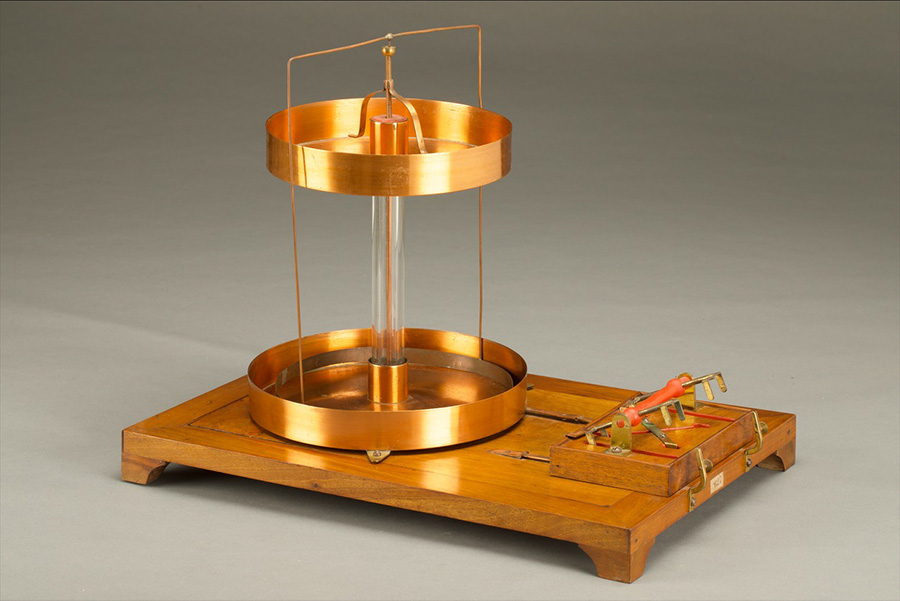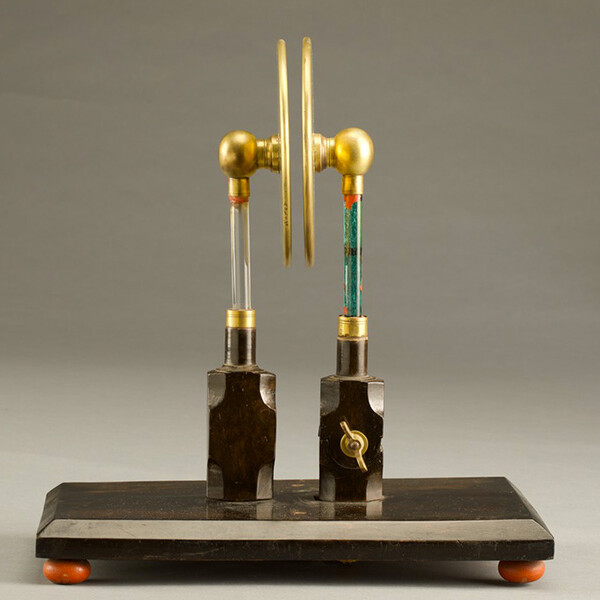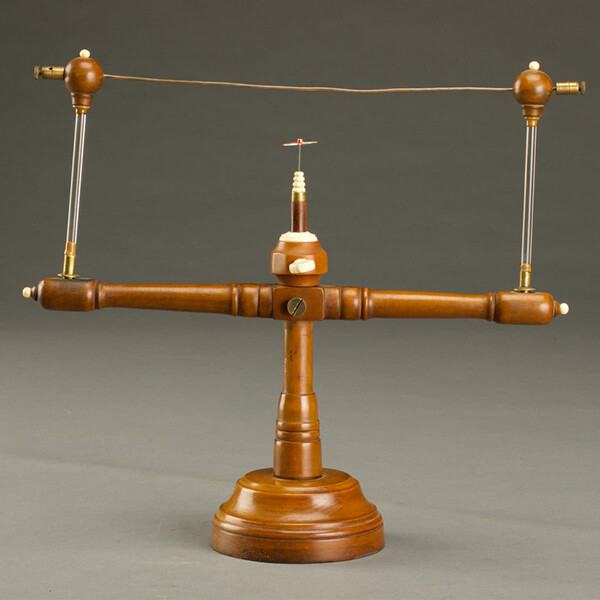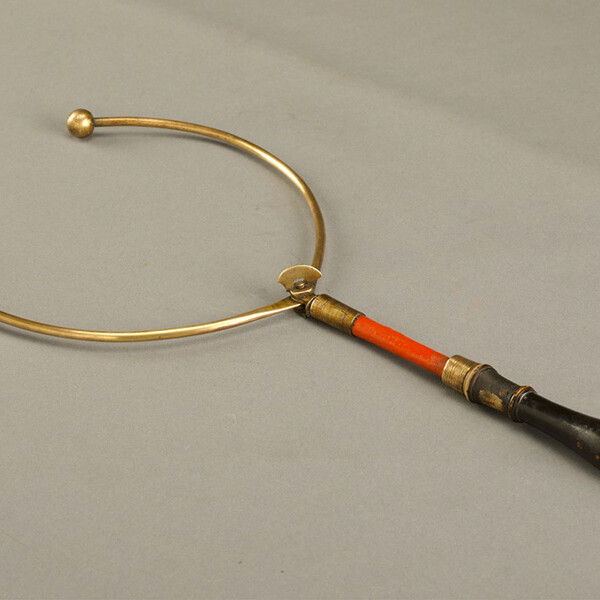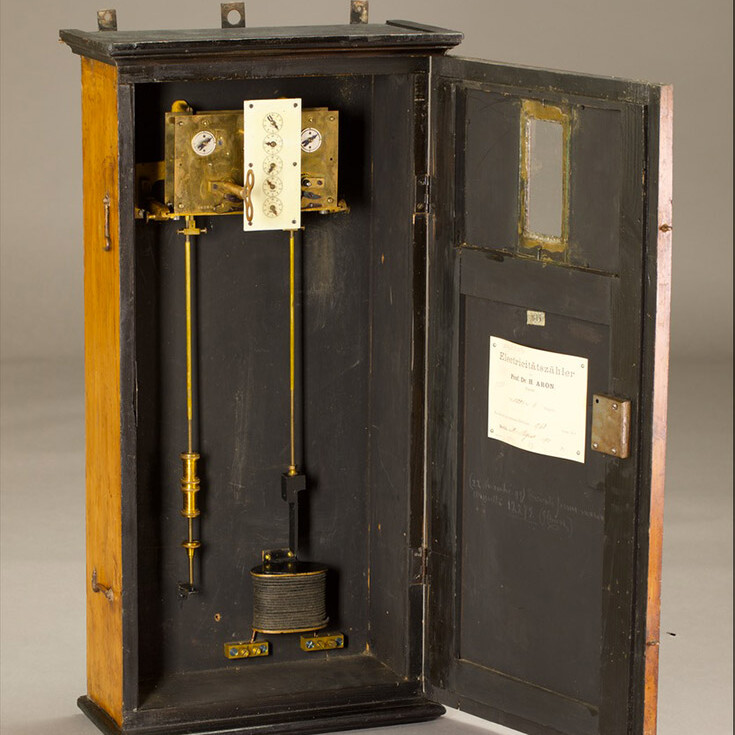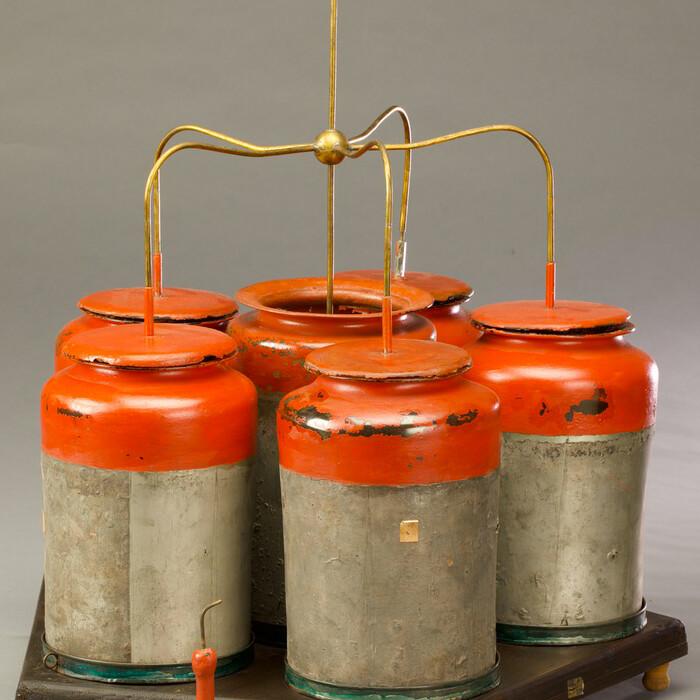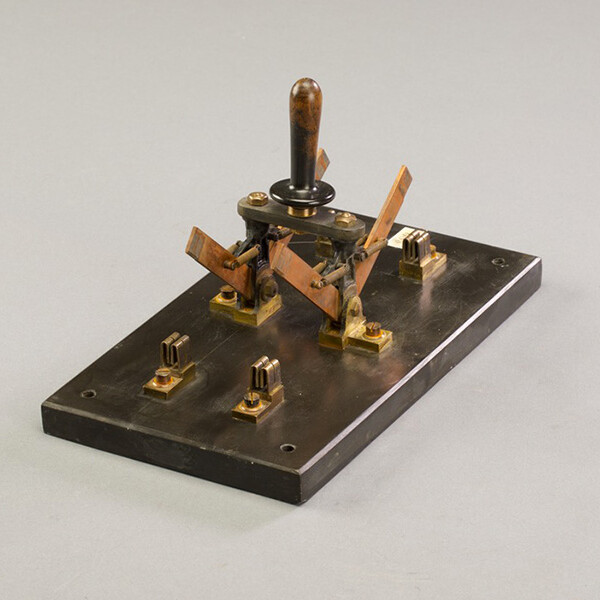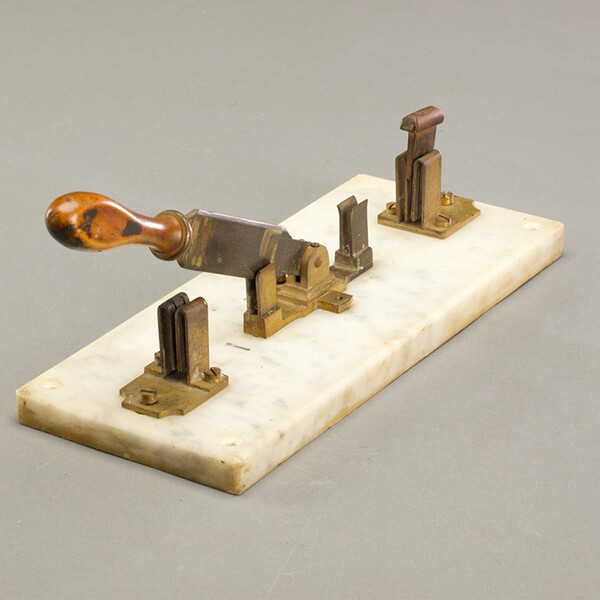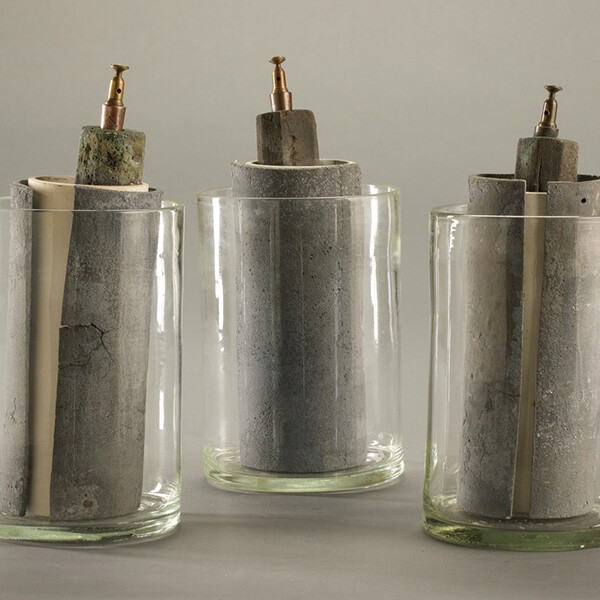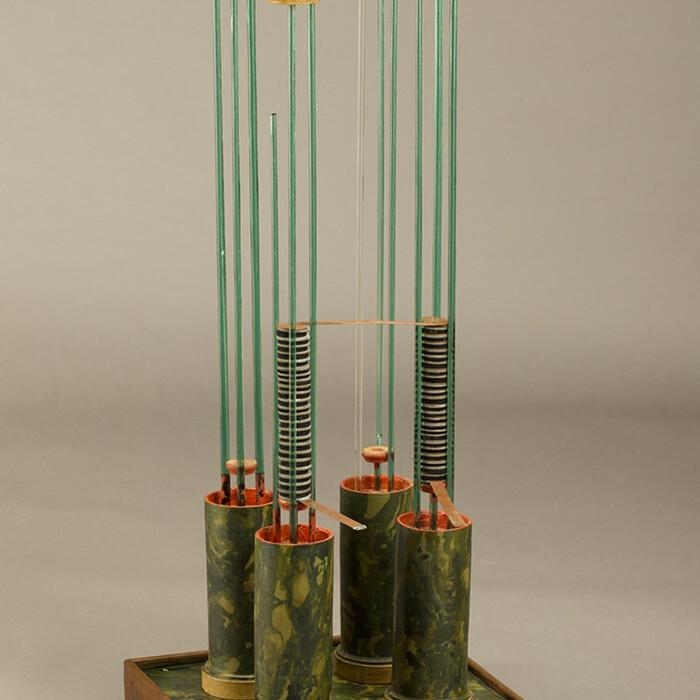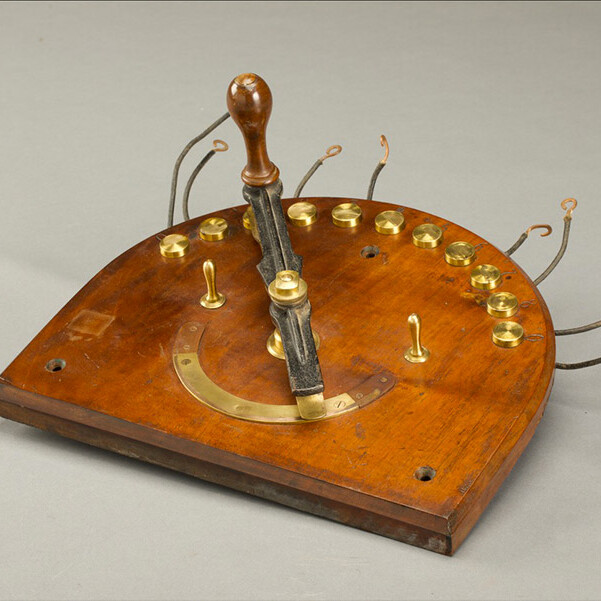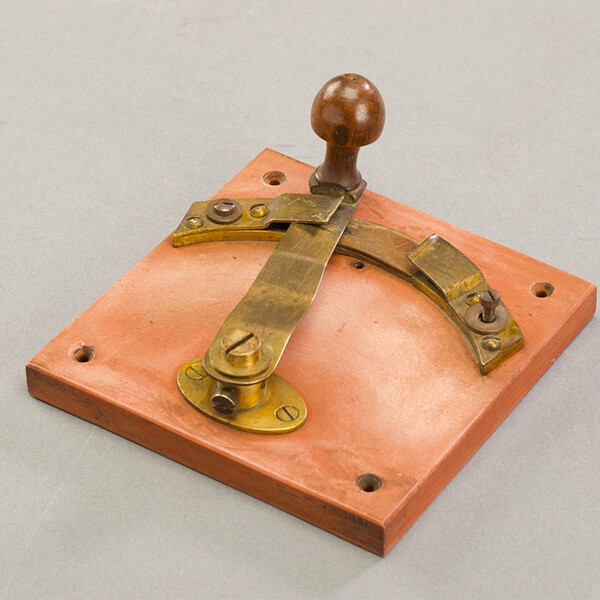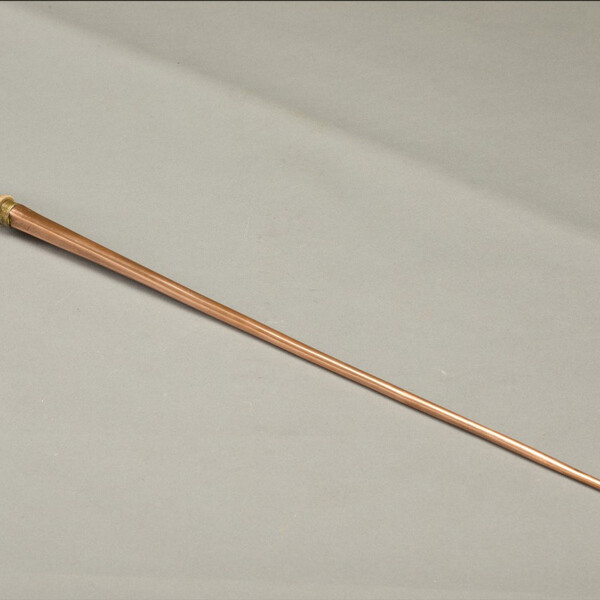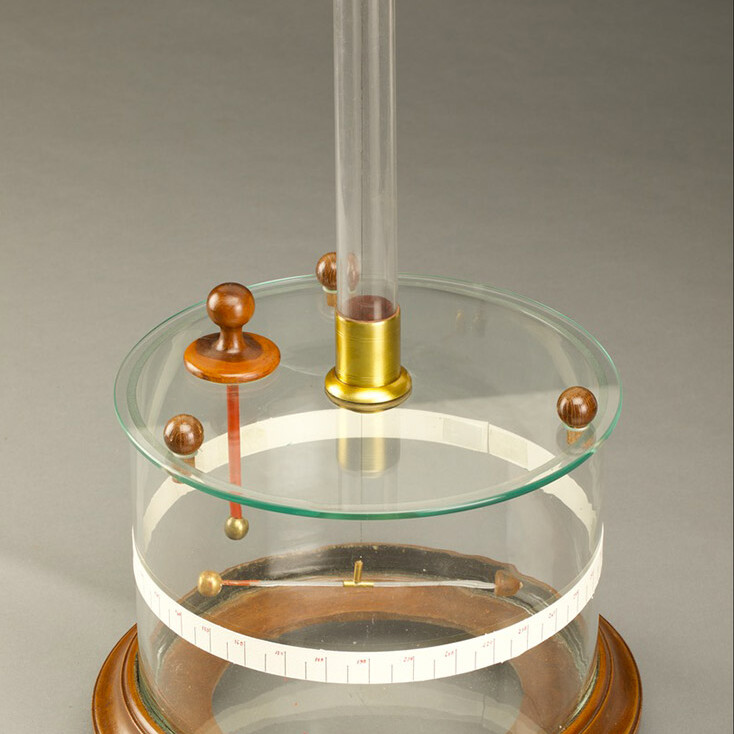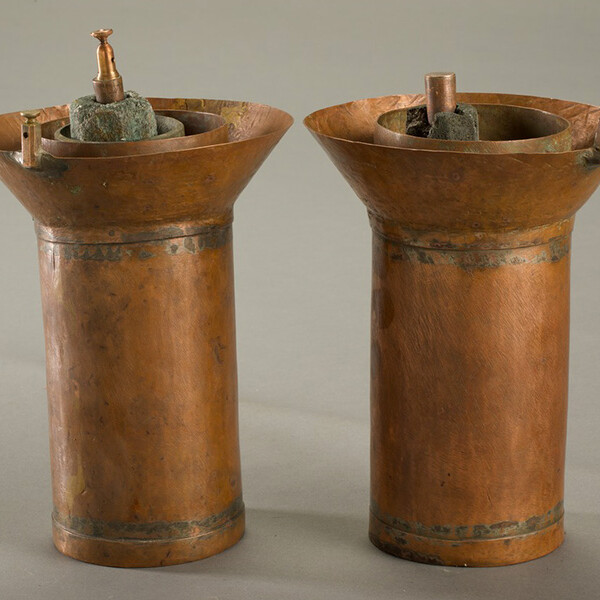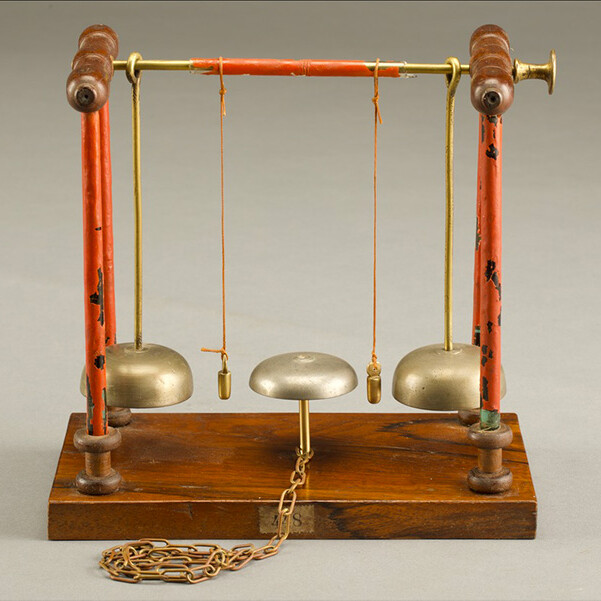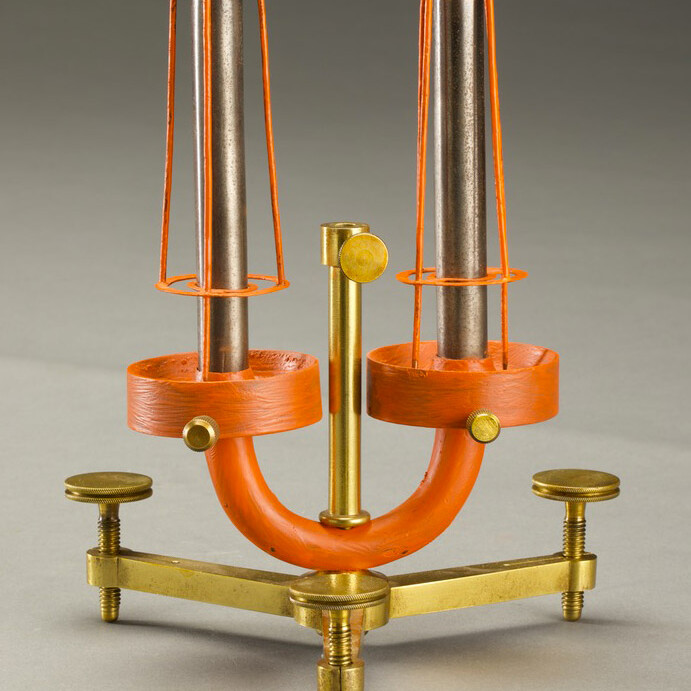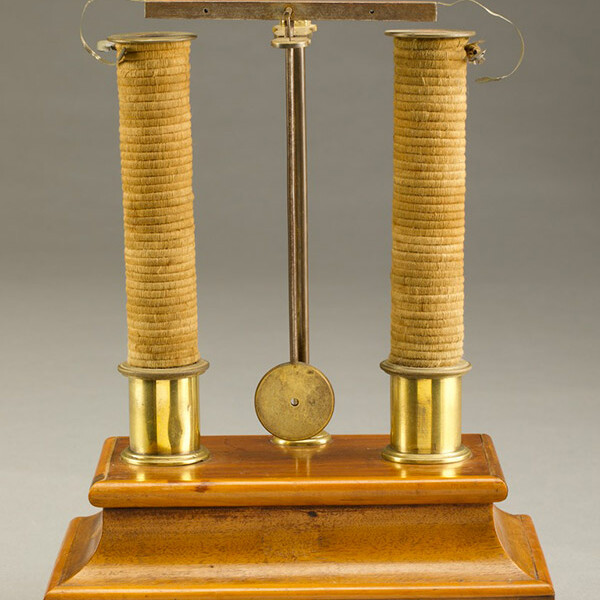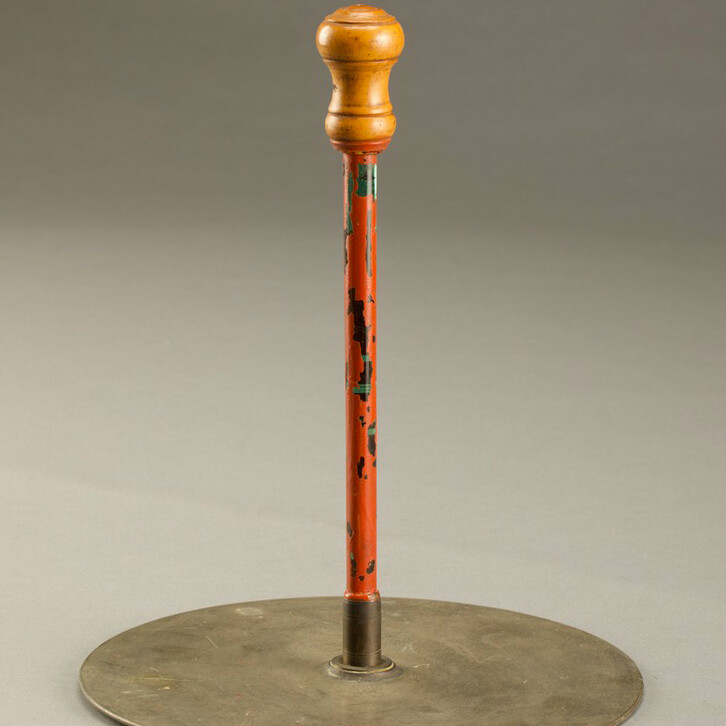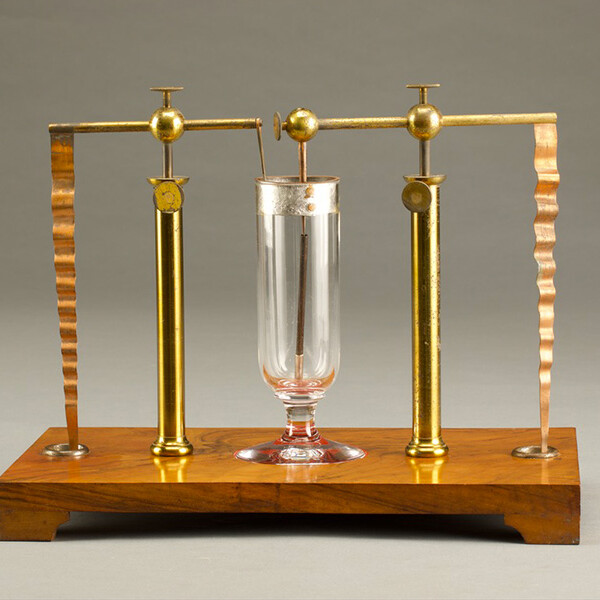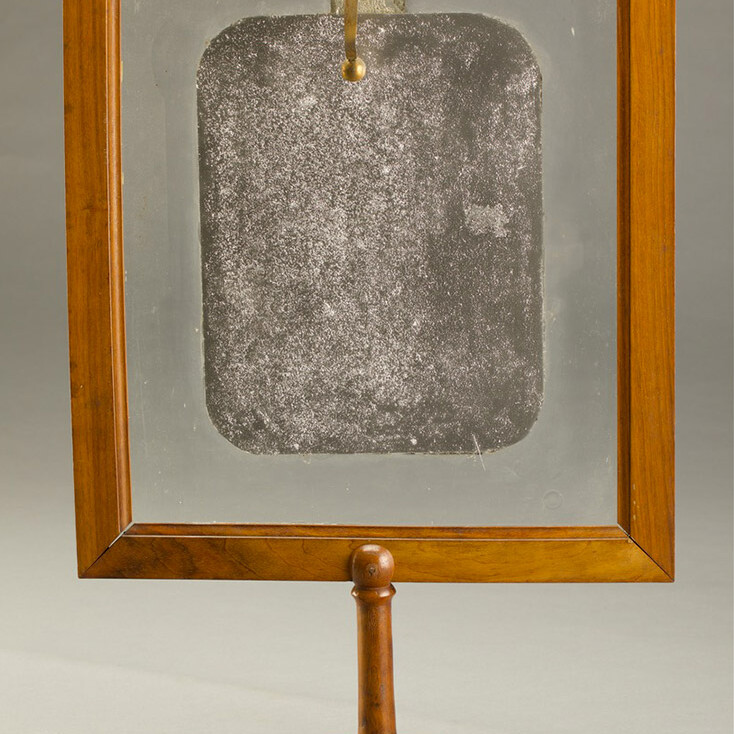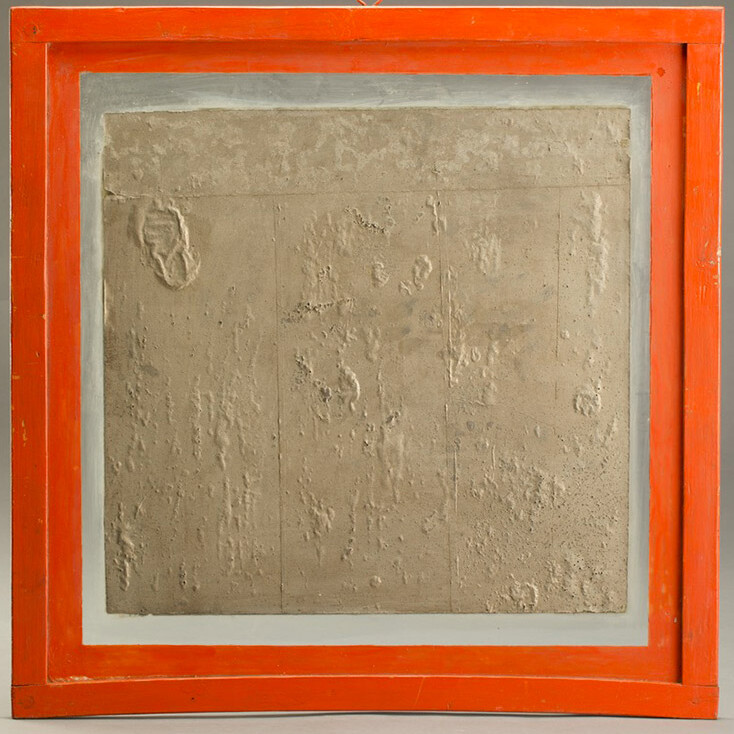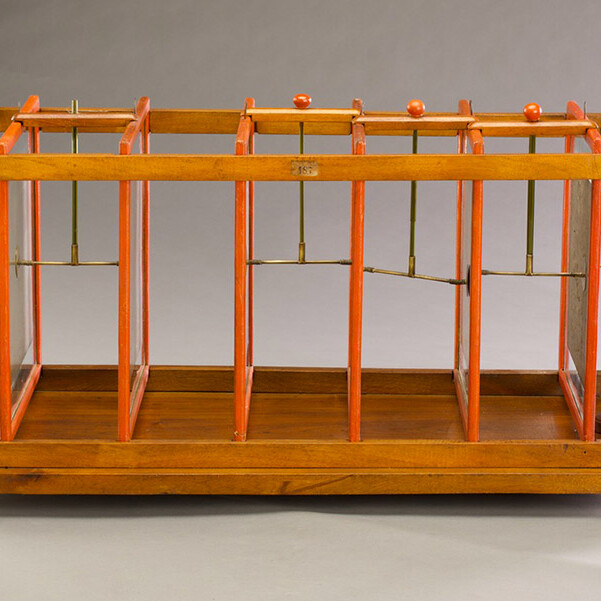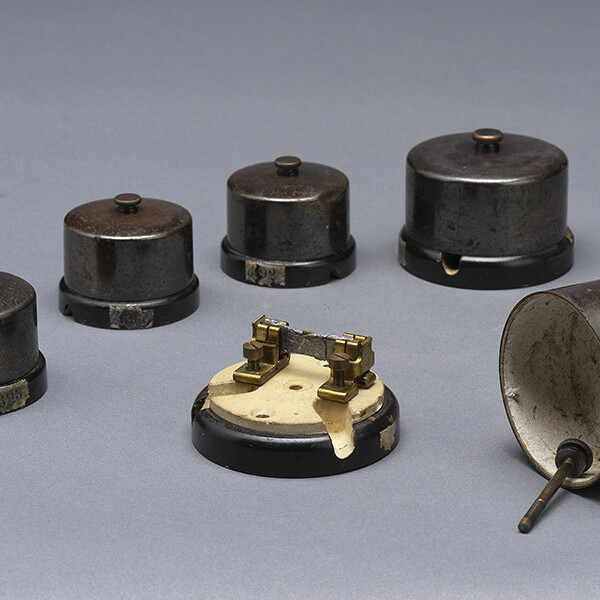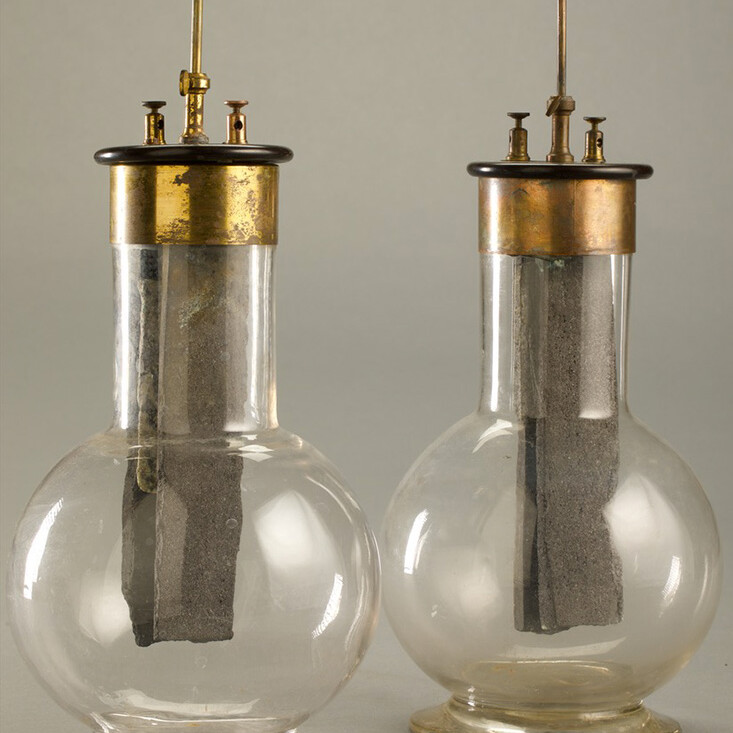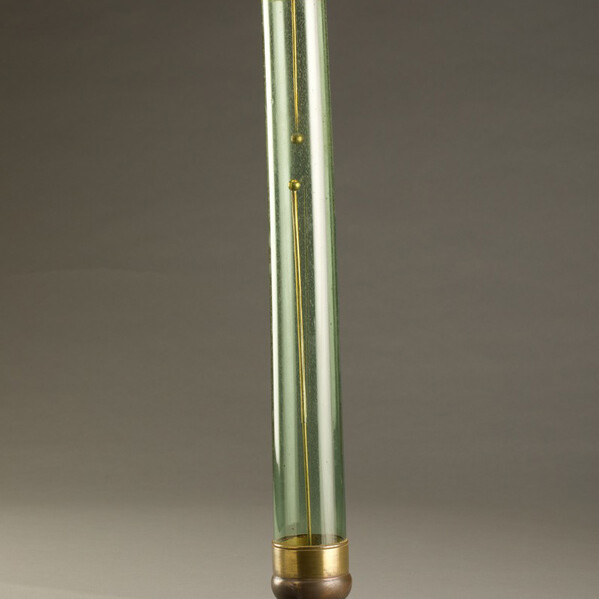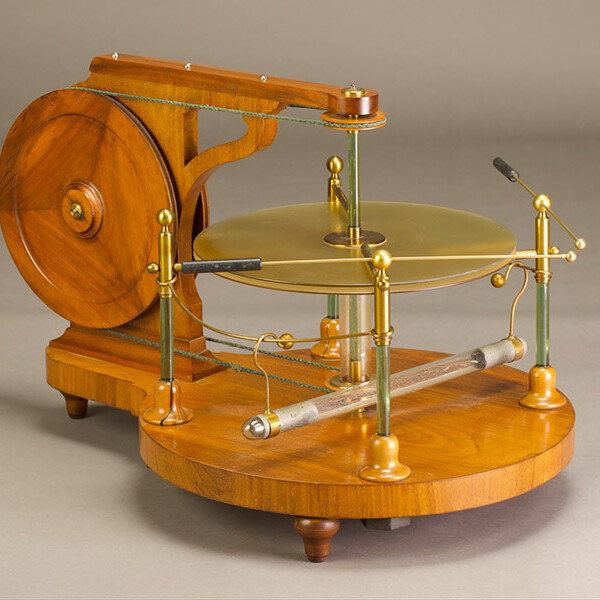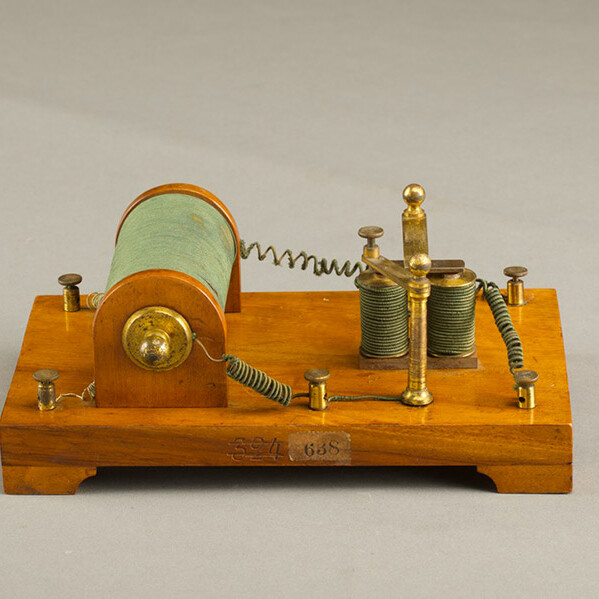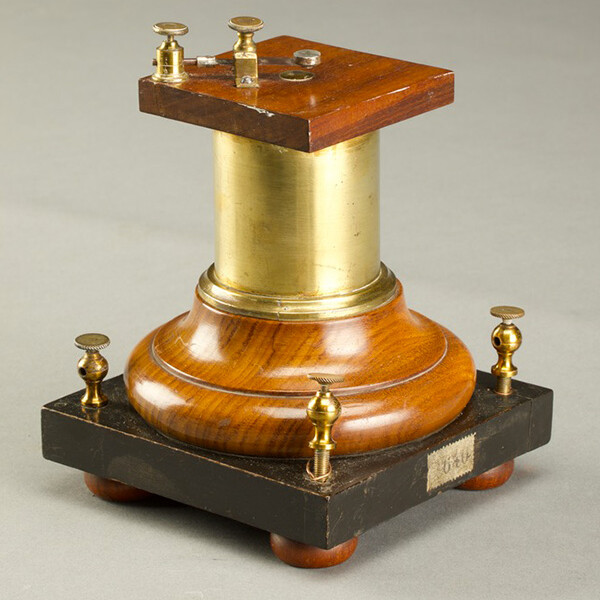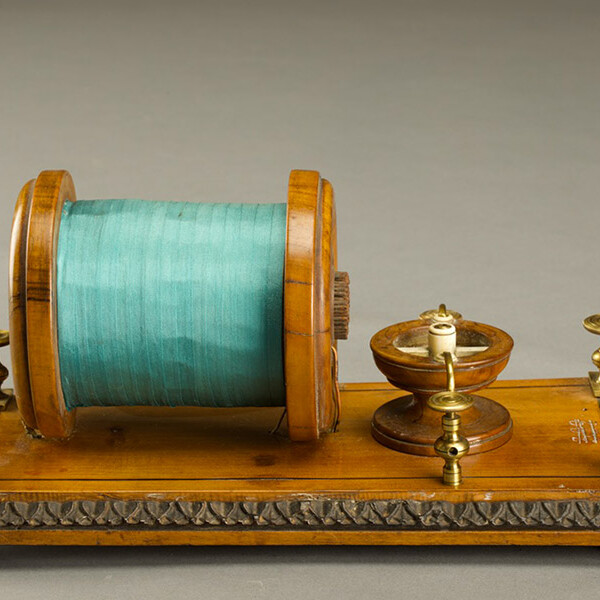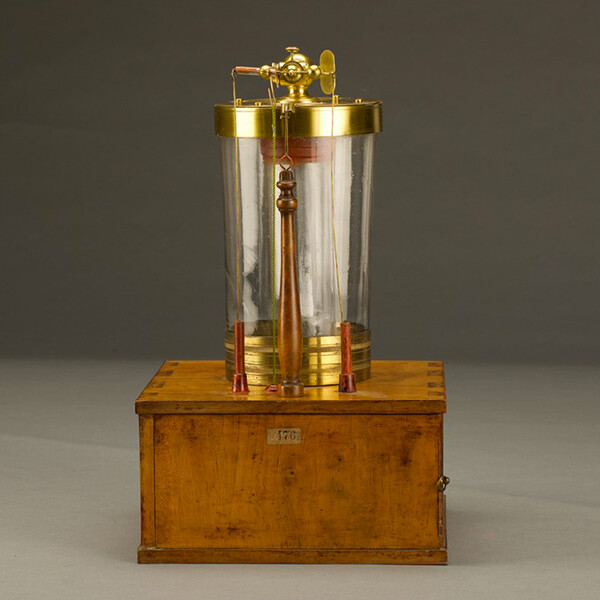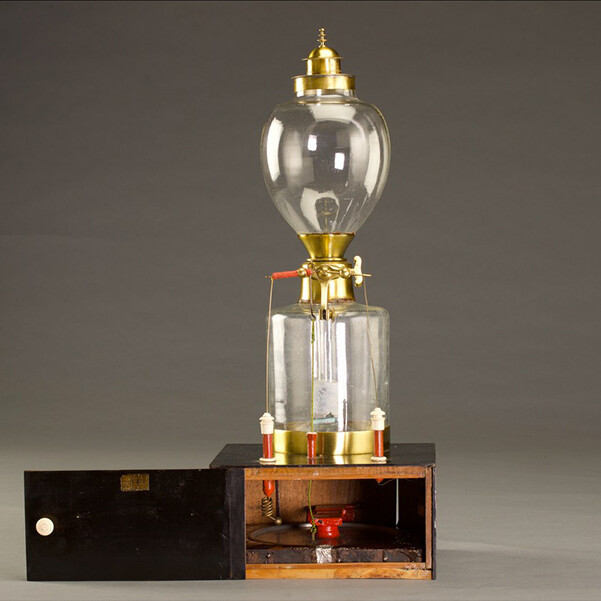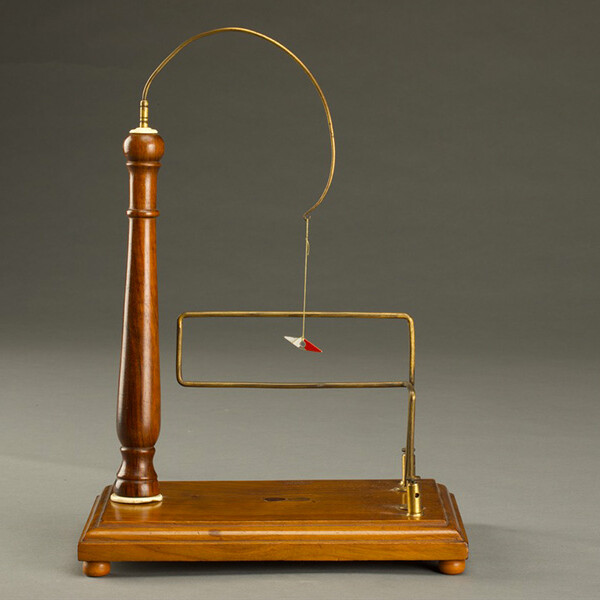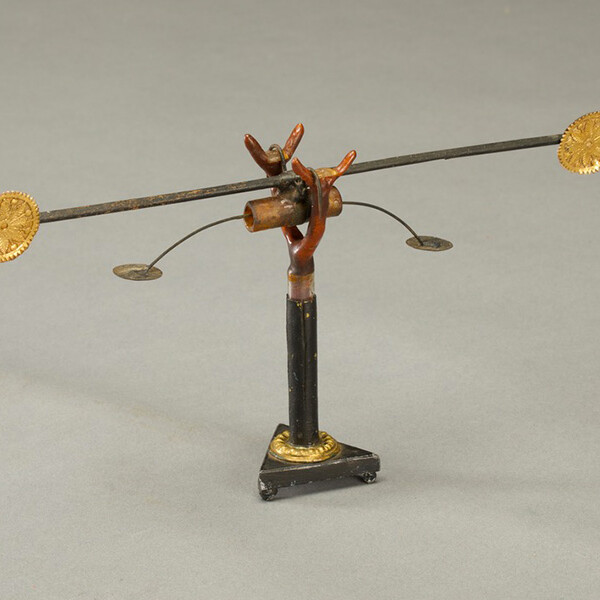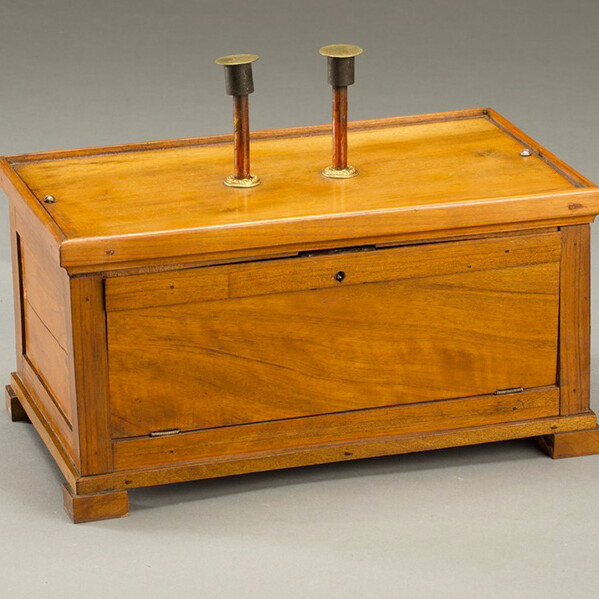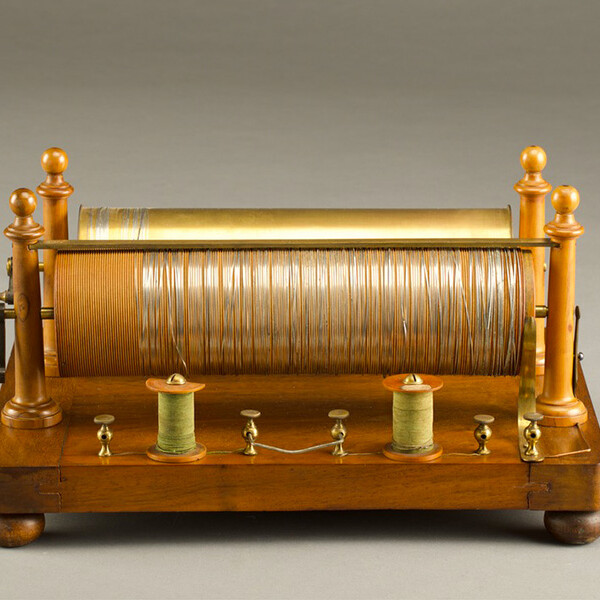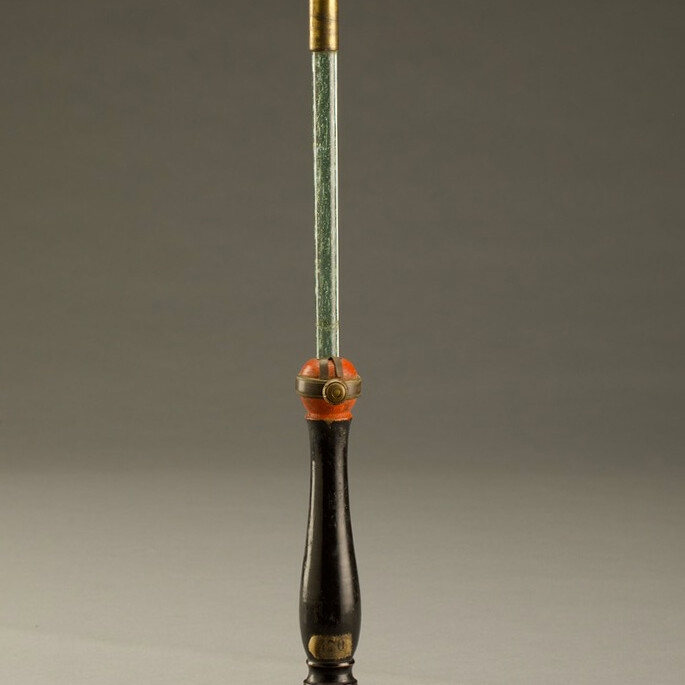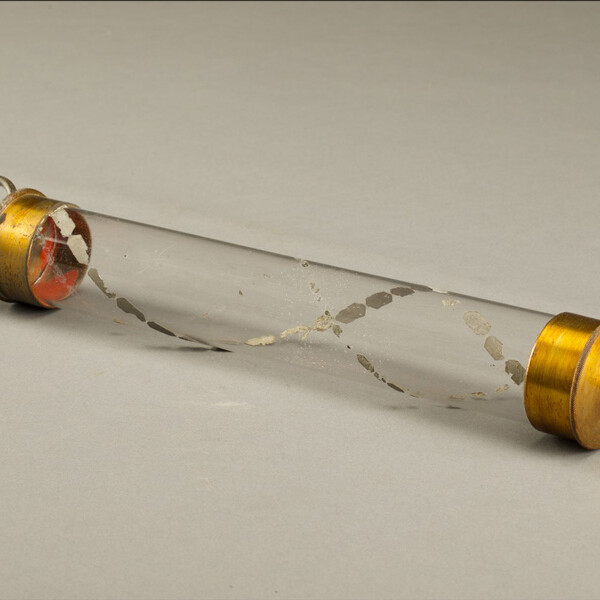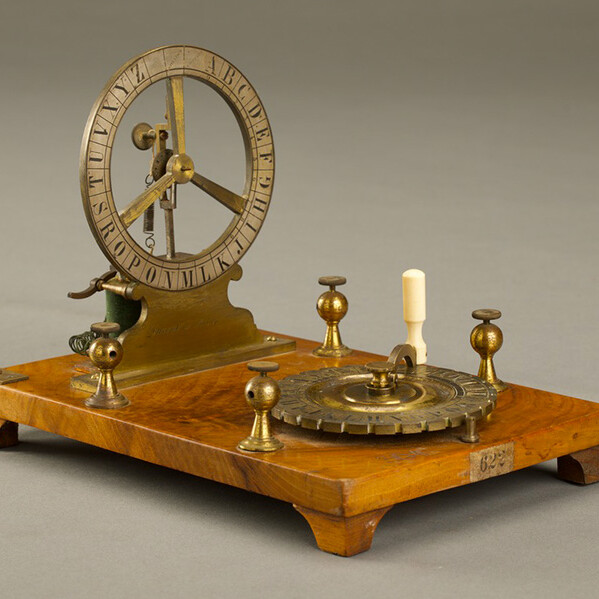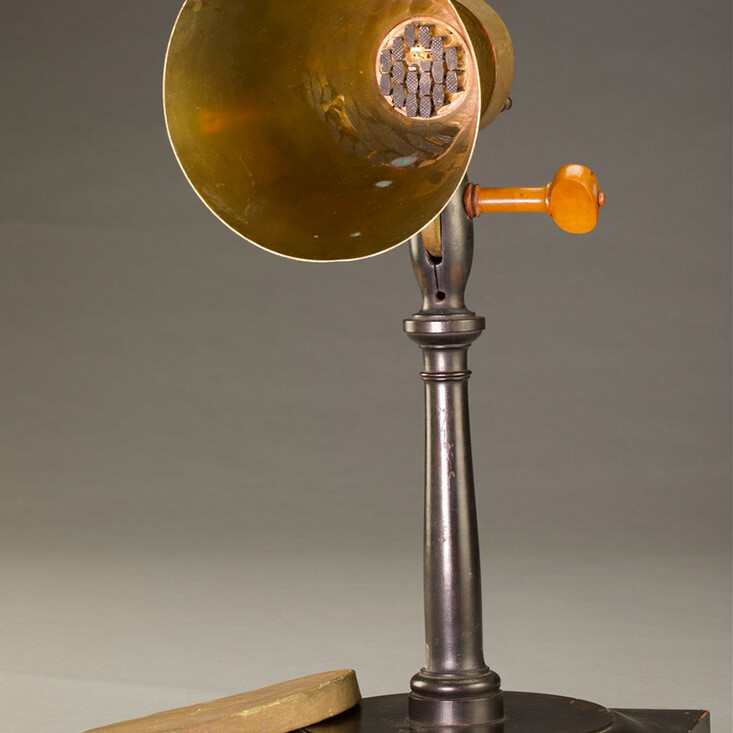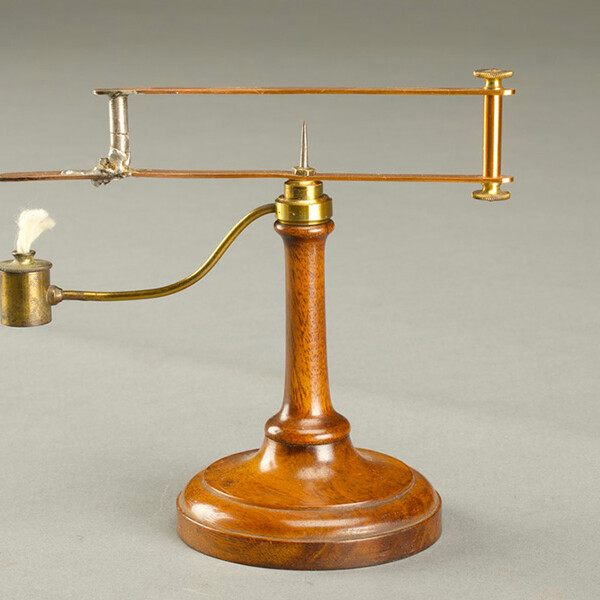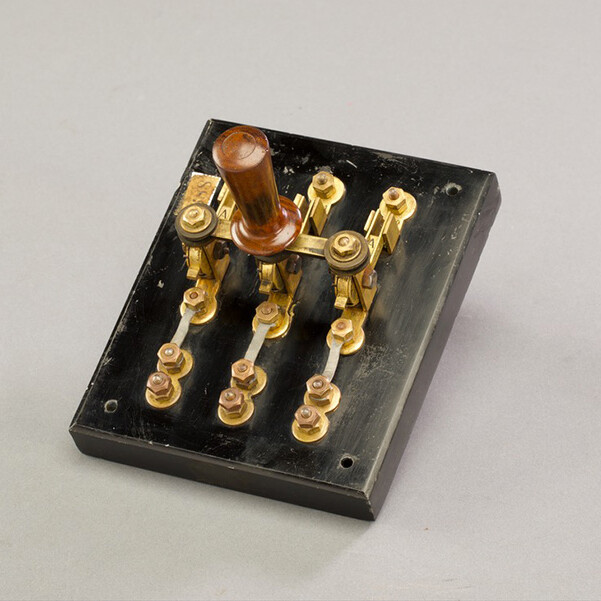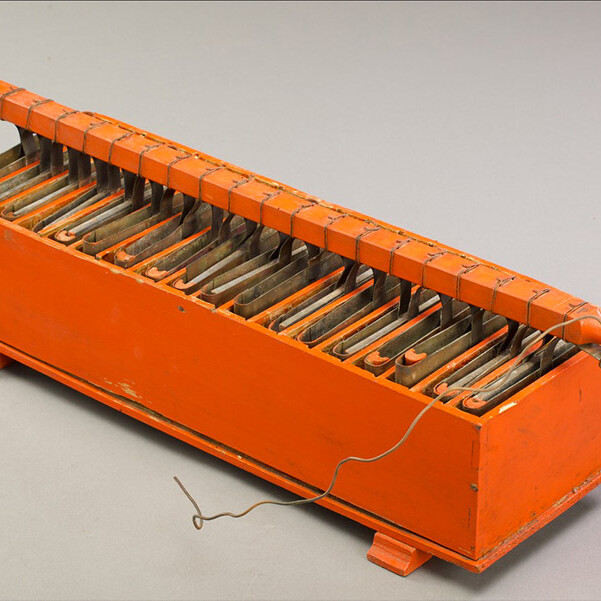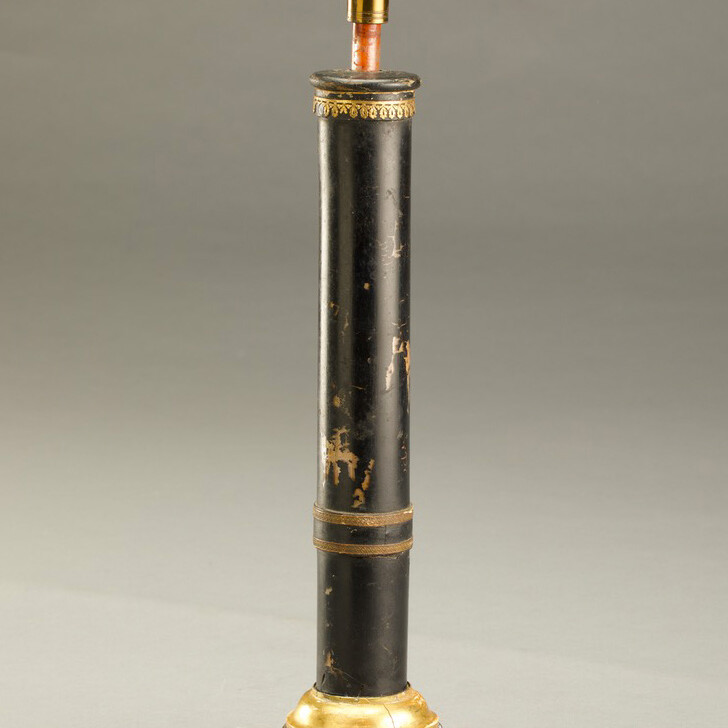This device, designed by French physicist Claude Pouillet (1790 – 1868), can be used to carry out various experiments on the interactions between electric currents and magnetic fields.
Two unconnected copper tanks, one mounted above the other on a wooden board, on one side of which there are two clamps for connection to a battery and a mercury switch that allows the direction of current flow to be reversed. The central glass column contains a large copper conductor with a small capsule on top that is filled with mercury. The mobile circuit is formed by a bent copper wire, connected at the bottom to a copper ring and equipped at the top with a tip by which it may be hung from the central capsule.
The instrument may be used to show the influence of the earth’s magnetic field on an electric current.
The lower tank is filled with slightly acidified water. Current from a battery enters this copper tank, passes through the acidic water and the copper ring, flowing up in the rectangular conductor and then down in the central column to return to the battery.
When the circuit is closed and current flows, the presence of the earth’s magnetic field causes the circuit to rotate around the central column, due to the forces created by interaction between the magnetic field and the electric current.
Device on display.
